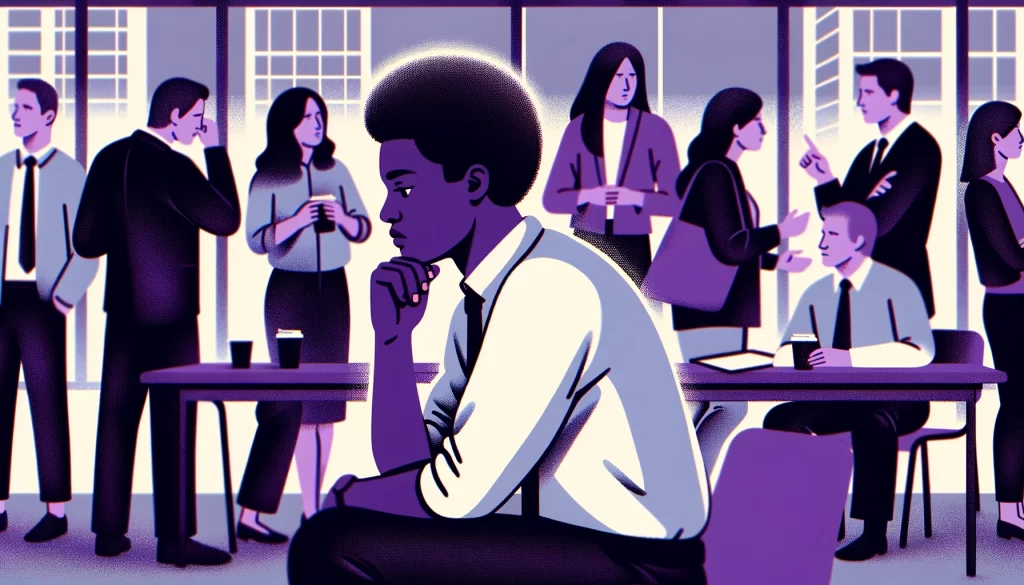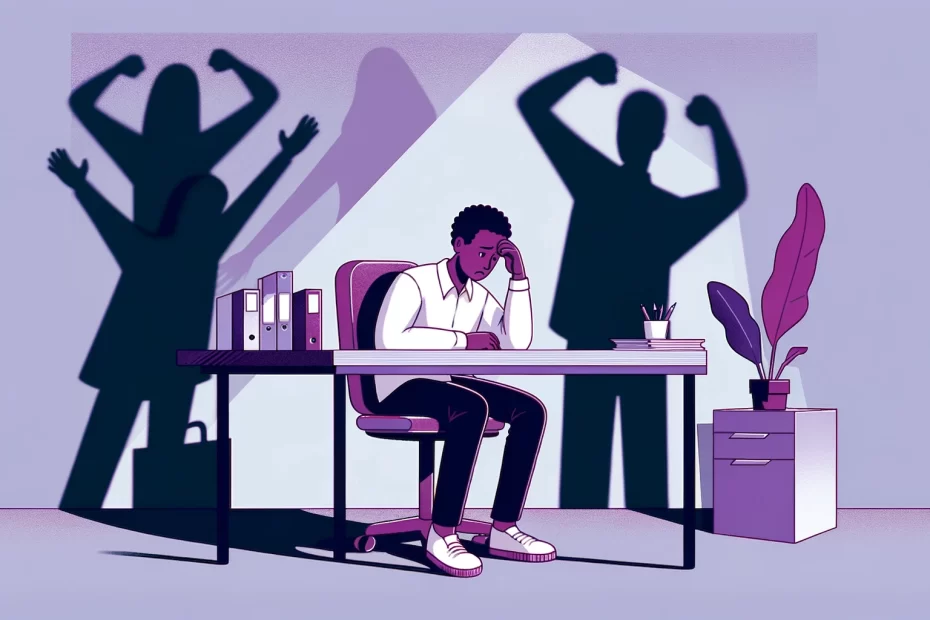Microaggressions have a significant impact on BIPOC (Black, Indigenous, and People of Color) employees in the workplace, affecting their mental health, job satisfaction, and overall productivity. These subtle forms of discrimination, often rooted in unconscious bias, can create a hostile work environment and hinder the success and well-being of marginalized groups. This blog post will delve into the impact of microaggressions on BIPOC employees, provide examples of microaggressions, explore their psychological toll, discuss their effects on workplace productivity and success, and offer strategies for creating a more inclusive workplace.
Key Takeaways:
- Microaggressions undermine and marginalize BIPOC employees in the workplace, impacting their mental health and job satisfaction.
- Research shows that microaggressions are associated with increased stress levels, burnout, and decreased trust and collaboration among team members.
- Racial battle fatigue, a form of mental exhaustion resulting from ongoing exposure to racial microaggressions and systemic racism, affects not only work performance but also personal lives and relationships.
- Microaggressions can manifest in various forms, including LGBTQ+ microaggressions, ableism microaggressions, age microaggressions, religious microaggressions, nationality or ethnicity microaggressions, socioeconomic microaggressions, racial microaggressions, gender microaggressions, and intersectional microaggressions.
- Creating a more inclusive workplace requires promoting diversity and inclusion, providing unconscious bias training, fostering open dialogue, and establishing policies that prioritize psychological safety and accountability.
The Impact of Microaggressions on BIPOC Mental Health and Work Environments
Research has shown that microaggressions can have a significant impact on the mental health of BIPOC employees, as well as the overall work environment. Microaggressions, which are subtle forms of discrimination and bias, can lead to higher levels of stress, depression, and anxiety among those who experience them.
One of the key consequences of microaggressions in the workplace is the erosion of trust and the creation of divisions among team members. These experiences hinder effective communication and collaboration, ultimately leading to decreased productivity. When employees feel marginalized or targeted by microaggressions, it can also contribute to lower job satisfaction and a higher likelihood of considering leaving their jobs.
Racial microaggressions are everyday insults or derogatory messages directed toward minorities and people of color, often from well-intentioned people who believe they’ve done nothing offensive. While a microaggression may seem harmless, a lifetime of microaggressions can be quite devastating to a person’s mental health.
Joy Bradford, a licensed psychologist, speaker, and the host of the mental health podcast, Therapy for Black Girls
Creating a work environment that is free from microaggressions is crucial for promoting the well-being of all employees. It requires fostering a culture of respect, empathy, and inclusivity, where diversity is embraced and celebrated. Organizations should establish policies and practices that address microaggressions, provide training to increase awareness, and promote open dialogue.
The Impact of Microaggressions:
- Higher stress levels
- Increased rates of depression and anxiety
- Eroded trust and divisions among team members
- Decreased productivity and collaboration
- Lower job satisfaction and increased likelihood of turnover
| Mental Health Effects | Work Environment Effects |
|---|---|
| Higher stress levels | Eroded trust |
| Increased rates of depression and anxiety | Divisions among team members |
| Decreased productivity and collaboration | |
| Lower job satisfaction and increased likelihood of turnover |

Understanding Racial Battle Fatigue
Racial battle fatigue is a term used to describe the mental exhaustion experienced by BIPOC (Black, Indigenous, and People of Color) individuals due to constant exposure to racial microaggressions and systemic racism. These repeated instances of discrimination and prejudice take a toll on their mental well-being, leading to heightened levels of depression, anxiety, and chronic fatigue.
The impact of racial battle fatigue extends beyond an individual’s emotional state. It directly affects their work performance and productivity, hindering their ability to fully engage in their professional responsibilities. The mental exhaustion caused by racial battle fatigue can make it challenging for BIPOC individuals to focus, concentrate, and deliver their best work.
Furthermore, racial battle fatigue can impact professional engagement and relationships within the workplace. BIPOC individuals may feel isolated, unvalued, and unsupported, which can lead to a breakdown in teamwork and collaboration. This not only hampers productivity but also affects the overall work environment, creating a sense of tension and mistrust amongst colleagues.
Outside of work, racial battle fatigue permeates into personal lives, straining relationships and diminishing quality of life. The mental and emotional burden carried by BIPOC individuals can spill over into their interactions with family, friends, and community, affecting their overall well-being and sense of belonging.
Addressing racial battle fatigue requires organizations to actively combat racial microaggressions and systemic racism. By fostering an inclusive and equitable work environment, organizations can minimize the mental exhaustion experienced by BIPOC individuals, leading to improved work performance, increased productivity, stronger professional engagement, and enhanced relationships within and beyond the workplace.
Recognizing Workplace Microaggressions and Their Forms
Microaggressions come in various forms and can occur in different aspects of workplace interactions. These subtle but impactful acts contribute to a hostile work environment and erode a person’s sense of belonging. It is crucial for organizations to recognize and address workplace microaggressions to foster an inclusive and respectful workplace culture.
LGBTQ+ Microaggressions
LGBTQ+ microaggressions are subtle instances of discrimination or invalidation experienced by individuals based on their sexual orientation or gender identity. These can include offhand comments, invalidation of pronouns, or exclusion from workplace events or conversations.
Ableism Microaggressions
Ableism microaggressions involve acts or statements that devalue or marginalize individuals with disabilities. This includes assumptions about capabilities, invasive questions, or lack of accommodations necessary for an inclusive work environment.
Age Microaggressions
Age microaggressions target individuals based on their age, either through stereotyping or underestimating their abilities or experience. This can manifest as condescending language, exclusion from decision-making processes, or assumptions about technology proficiency.
Religious Microaggressions
Religious microaggressions occur when individuals are subjected to derogatory comments, assumptions, or exclusion based on their religious beliefs or practices. This includes insensitive jokes, assigning stereotypes, or scheduling events that conflict with religious observances.
Nationality or Ethnicity Microaggressions
Microaggressions based on nationality or ethnicity target individuals through offensive comments, stereotypes, or discriminatory treatment. This can include questions about accents, assumptions about cultural norms, or exclusion from professional opportunities.
Socioeconomic Microaggressions
Socioeconomic microaggressions involve acts or statements that subtly discriminate against individuals based on their socioeconomic status. This can manifest through assumptions about financial stability, derogatory language, or exclusion from networking opportunities.
Racial Microaggressions
Racial microaggressions are subtle instances of discrimination or invalidation based on an individual’s racial or ethnic background. Examples include racial slurs, assumptions about intelligence or competence, or repeated questioning of one’s identity.
Gender Microaggressions
Gender microaggressions target individuals based on their gender identity or expression, perpetuating stereotypes and norms. This can include dismissive language, assumptions about abilities, or exclusion from decision-making processes.
Intersectional Microaggressions
Intersectional microaggressions occur when individuals experience multiple forms of discrimination simultaneously, such as racial and gender microaggressions. These can compound the negative impact on individuals and further marginalize them in the workplace.
By recognizing and addressing workplace microaggressions, organizations can create a more inclusive, respectful, and supportive work environment where all employees can thrive.
Wrapping it Up…
Creating a supportive and inclusive workplace requires a commitment to workplace etiquette and psychological safety. Leaders play a crucial role in fostering an environment where employees feel valued, respected, and included. By prioritizing psychological safety, leaders can create a foundation of trust and open communication, enabling employees to share their experiences and concerns regarding microaggressions. This, in turn, allows for timely identification and resolution of issues, preventing further harm to marginalized groups.
Accountability is vital in addressing microaggressions. Leaders must take responsibility for their own actions and hold others accountable as well. By setting clear expectations and consequences for discriminatory behavior, organizations can send a strong message that microaggressions will not be tolerated. Moreover, HR policies should be established to support employees who experience microaggressions, providing avenues for reporting, confidential support, and appropriate disciplinary actions.
Promoting workplace diversity and inclusion goes beyond mere compliance with diversity quotas. It requires creating a culture that values and celebrates differences. By fostering open dialogue and creating opportunities for employees to learn and understand different perspectives, organizations can build empathy and promote a supportive environment where microaggressions are actively prevented. Workplaces that embrace diversity and inclusion not only attract a diverse talent pool but also see increased collaboration, innovation, and employee satisfaction.
In conclusion, addressing microaggressions and cultivating a safe and inclusive work environment requires a combination of leadership, HR policies, and cultural transformation. Organizations must prioritize workplace etiquette, psychological safety, and accountability to foster a supportive environment where all employees can thrive. By actively promoting workplace diversity and inclusion, organizations can create a stronger, more innovative, and harmonious workforce.
FAQ
What are microaggressions?
Microaggressions refer to everyday verbal, behavioral, or environmental insults that undermine and marginalize BIPOC employees.
How do microaggressions impact mental health and job satisfaction?
Microaggressions are associated with higher stress levels, depression, and anxiety. They can also lower job satisfaction and contribute to burnout among BIPOC employees.
What are the consequences of organizations failing to address microaggressions?
Organizations that fail to address microaggressions experience decreased productivity and higher turnover rates among BIPOC employees.
What is racial battle fatigue?
Racial battle fatigue refers to the mental exhaustion experienced by BIPOC individuals due to ongoing exposure to racial microaggressions and systemic racism.
How does racial battle fatigue impact work performance and quality of life?
Racial battle fatigue can lead to heightened depression, anxiety, and overall decline in well-being, affecting both work performance and personal lives.
What are some examples of workplace microaggressions?
Workplace microaggressions can take the form of LGBTQ+ microaggressions, ableism microaggressions, age microaggressions, religious microaggressions, nationality or ethnicity microaggressions, socioeconomic microaggressions, racial microaggressions, gender microaggressions, and intersectional microaggressions.
How do microaggressions impact the work environment?
Microaggressions erode a person’s sense of belonging, contribute to a hostile work environment, and hinder effective communication and collaboration among team members.
How can organizations create a safe and inclusive work environment?
Organizations can prioritize psychological safety, hold themselves and others accountable for addressing microaggressions, establish supportive HR policies, and promote diversity and inclusion through open dialogue and a culture of respect and empathy.

